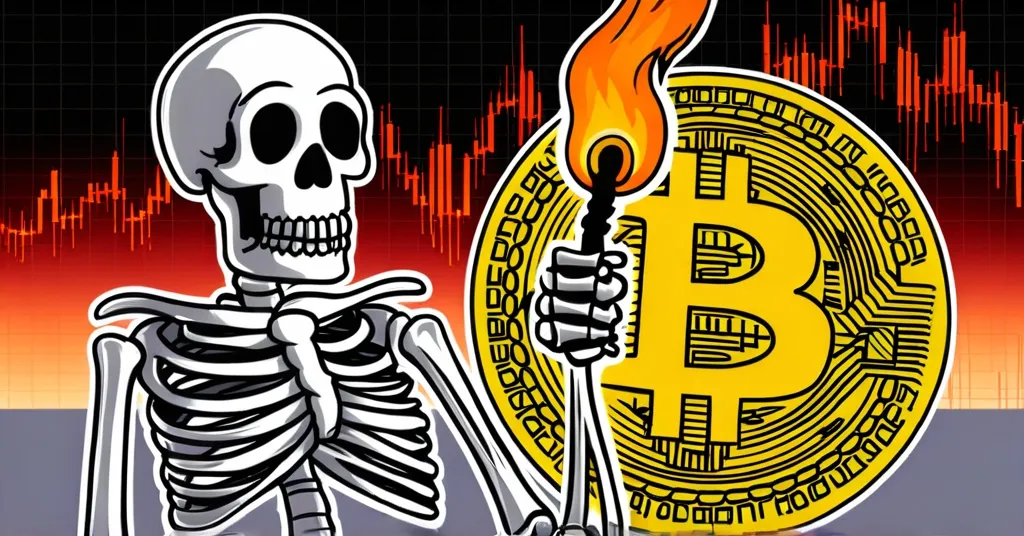Michael Saylor Proposes Burning Bitcoin Keys After Death to Increase Scarcity

Michael Saylor’s Bold Bitcoin Proposal: Burn Keys Upon Death to Boost Scarcity
– Saylor suggests burning Bitcoin keys upon death to enhance scarcity.
– This could potentially raise Bitcoin’s value.
– The proposal divides the crypto community.
Michael Saylor, the visionary behind MicroStrategy and a staunch advocate for Bitcoin, has proposed a radical idea: burning Bitcoin keys upon the holder’s death. This would mean permanently deleting the access codes to Bitcoin wallets, removing the tokens from circulation and increasing Bitcoin’s scarcity. Saylor believes this could drive up Bitcoin’s value, but his proposal has sparked a fierce debate within the crypto community.
Saylor’s vision is straightforward: by ensuring that Bitcoin cannot be accessed after the holder’s demise, the cryptocurrency’s finite supply—capped at 21 million—becomes even more constrained. Currently, there are 19,924,481.25 Bitcoins in circulation, representing 94.878% of the total supply, with about 1,075,518.8 Bitcoins left to be mined at a rate of roughly 450 per day. Saylor sees this as a “fair share contribution to everyone in the world who owns Bitcoin,” a gift to the global Bitcoin community.
Reactions to Saylor’s proposal have been mixed. Some applaud it as “next-level diamond hands stuff,” a testament to Saylor’s unwavering commitment to Bitcoin’s value. X user Bark Ruffalo even quipped that it would be a “crazy ride for those holding the bag.” However, others argue that such a move goes against the very principles Bitcoin was built on—financial inclusion and utility. Burning keys could be seen as wasteful, potentially harming the ecosystem by reducing the available supply that could be used for transactions.
MicroStrategy, under Saylor’s leadership, has been at the forefront of corporate Bitcoin adoption. As the largest corporate holder of Bitcoin, with recent acquisitions bringing their total to 447,470 BTC valued at $44.55 billion, the company’s actions and Saylor’s proposals carry significant weight in the crypto space. Saylor’s strategy has always been to promote Bitcoin’s adoption by corporations and governments, a mission he believes he inherited from Bitcoin’s pseudonymous creator, Satoshi Nakamoto. “Having taken the torch from Satoshi,” Saylor has been instrumental in commercializing Bitcoin on a scale that was unimaginable decades ago.
The debate over Saylor’s proposal reflects broader tensions within the cryptocurrency community. Bitcoin maximalism—the belief that Bitcoin will eventually become the dominant cryptocurrency—and effective accelerationism—the idea of accelerating technological progress to drive economic growth—support the notion that increasing scarcity could theoretically boost Bitcoin’s value. However, it raises questions about the long-term utility and accessibility of Bitcoin as a currency. As champions of decentralization and freedom, we must weigh these considerations carefully. While Bitcoin’s role as a store of value is undeniable, its potential as a tool for financial inclusion and disruption of the status quo cannot be overlooked.
Moreover, the proposal touches on ethical considerations about permanently removing assets from circulation. It’s a move that could be seen as antithetical to the spirit of privacy and autonomy that many in the crypto space hold dear. Yet, in a world where financial systems are ripe for disruption, such bold ideas can spark necessary conversations about the future of money and finance.
As we navigate these complex waters, it’s crucial to maintain a balanced perspective. While Saylor’s proposal has merit in its aim to enhance Bitcoin’s scarcity, we must also consider the potential risks and the broader implications for the cryptocurrency ecosystem. Bitcoin’s journey is far from over, and proposals like these are just one part of the ongoing evolution of this revolutionary technology.
Key Takeaways and Questions
- What is the purpose of burning Bitcoin keys upon death?
The purpose is to permanently remove Bitcoin from circulation, thereby increasing its scarcity and potentially its value, as a “gift” to the global Bitcoin community. - How does Bitcoin’s scarcity affect its value?
Bitcoin’s value is largely driven by its scarcity, with a total supply capped at 21 million coins. Reducing the circulating supply could theoretically increase its value. - What is the current status of Bitcoin’s supply?
As of the latest data, 19,924,481.25 Bitcoins are in circulation, representing 94.878% of the total supply, with about 1,075,518.8 Bitcoins left to be mined. - How has the crypto community reacted to Saylor’s proposal?
The proposal has sparked a significant debate, with some praising it as a bold move to enhance Bitcoin’s value, while others criticize it as contrary to Bitcoin’s principles of financial inclusion and potentially harmful to the ecosystem. - What role does MicroStrategy play in the Bitcoin ecosystem?
MicroStrategy, under Michael Saylor’s leadership, is the largest corporate holder of Bitcoin, actively promoting its adoption and contributing to the narrative of Bitcoin as a corporate asset. - What are Bitcoin maximalism and effective accelerationism?
Bitcoin maximalism is the belief that Bitcoin will eventually become the dominant cryptocurrency, while effective accelerationism is the idea of accelerating technological progress to drive economic growth. - What are the ethical considerations of burning Bitcoin keys?
Burning Bitcoin keys raises ethical questions about permanently removing assets from circulation, potentially conflicting with the principles of privacy and autonomy valued in the crypto community.
Michael Saylor’s proposal to burn Bitcoin keys upon death is a bold move aimed at enhancing Bitcoin’s scarcity and value. While it aligns with the principles of Bitcoin maximalism and effective accelerationism, it also raises critical questions about financial inclusion and the long-term utility of Bitcoin. As the crypto community continues to debate these issues, it’s essential to maintain a balanced perspective that considers both the potential benefits and the risks of such a strategy.



